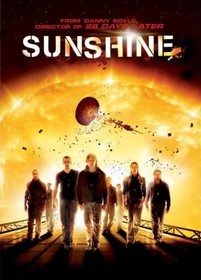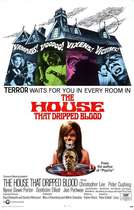Our editor-in-chief Nate Yapp is proud to have contributed to the new book Hidden Horror: A Celebration of 101 Underrated and Overlooked Fright Flicks, edited by Aaron Christensen. Another contributors include Anthony Timpone, B.J. Colangelo, Dave Alexander, Classic-Horror.com's own Robert C. Ring and John W. Bowen. Pick up a copy today from Amazon.com!
Sunshine (2007)
Danny Boyle’s Sunshine is about the struggle for hope woven into a tale of a survival in the far reaches of outer space. Sunshine is a taxing experience for the viewer, requiring a great deal of patience because of the slow pace, the result of the film being almost entirely character-driven. As Sunshine pushes forward, the characters descend deeper into the depths of sheer depravity, and their decisions, while seeming inauspicious to some, are never implausible. That the characters make such calamitous decisions is a testament to the film's superb writing, which never turns its heroes into clichés or sullies the plot with thrills for the sake of thrills. Sunshine is a taut sci-fi thriller that knows its place and stands its ground.
Admittedly, the plot is not as well-constructed as it should be, and is in need of some tightening. In a dreary opening monologue that nevertheless sets the tone and mood for the piece, physicist Robert Capa (Cilian Murphy, 28 Days Later, also by Boyle), explains that the sun is slowly dying and that a space shuttle named the “Icarus II” has been sent to “re-ignite” it with a nuclear bomb. Capa is one of eight scientists on board, and an early discussion in the film reveals that one bomb might not actually work, which begs the question, “Why didn't eight scientists figure this out before liftoff?” Thankfully, the “Icarus I,” a vessel thought to have been lost in space, is picked up on radar and appears to have another nuclear bomb on board.
That is all that can really be said about the plot without reaching “spoiler alert” level. There is a lot of padding that has been written into the story, scientific jargon and otherwise mumbo jumbo filling in the holes where questions might otherwise arise. However, when focusing on the characters, the writing truly begins to shine. Each one is carefully developed, boasting particular quirks and traits, rounded out with human error, certain flaws that keep them grounded and on a level with the audience. Biologist Corazon (Michelle Yeoh, Memoirs of a Geisha) has a special relationship with her oxygen garden that will later prevent her from making the right decision. Mace (Chris Evans, Fantastic Four) is capable of informed decision-making, but has a temper that prevents him from sounding reasonable in a time of crisis. Even the resident shrink, Dr. Searle (Cliff Curtis, The Fountain), in-between helping fellow members of the crew, stares ominously at the sun and wonders eerily what it would be like to be overcome with its light.
Devoting so much time to developing the characters, both the director, Danny Boyle, and the screenwriter, Alex Garland (The Beach, 28 Days Later), are responsible for how slowly the film moves through its 100-minute runtime. Garland’s one true mistake in the script is that the plot is told to us through either monologue or voiceover. Though the action on screen helps to perpetuate the plot, its true purpose seems to be to create more dimensions for the characters. Most of the opening monologue of the film, for example, could have just as easily been shown to the audience instead of vaguely explained. For a film that is so focused on the possible end of the earth, the planet itself is shown once at the start of the film and once again at the end, with a total combined screen time of under five minutes. Voiceover fills in the rest.
Visually, however, the film doesn’t suffer in the slightest. Sunshine is beautifully rendered and stunningly crafted. There are dozens of extended takes where Boyle’s camera stares at the magnificent sun as it beams radiantly just outside the space shuttle. In these long, almost loving and appreciative shots, the sun becomes a supporting character and most certainly could even be considered part of the crew. Onboard, the stark white paint is a curious choice; on the one hand, it calls to mind Stanley Kubrick’s 2001: A Space Odyssey and, on the other, it reminds us that the color itself represents both purity and death, depending from which culture it emanates. Boyle uses it primarily for the latter, choosing to color the white interior walls red during the last act of the film.
Those wishing to preserve the experience of the final hurrah should skip ahead now, because it has proven to be a daunting task to explain the merits of Sunshine as a horror film without spoiling the ending. During the last act of the film, an alien being that has transferred from the abandoned “Icarus I” to the “Icarus II” stalks and ultimately kills most of the crew. All at once, Sunshine has morphed from a sci-fi thriller into a slasher movie. Even the film’s direction has changed, the camera shots transformed from long and lingering to short and brief. By mixing in bits of the paranormal, Sunshine keeps the mood from becoming too hostile, never losing sight of the psychological tension that has been established by the rest of the film. The mysterious being on-board the ship appears on camera briefly, a blurred image that seems to question its existence outside the minds of the characters. Horror aficionados will find solace with the last half of Boyle’s film, as the character’s deaths are both unsettling and tragic, yet those invested in the human psyche will find themselves unable to turn away.
Better known for his more visceral pieces of cinema, director Danny Boyle has proven in the last few years that his film range is ever-growing. Sunshine is just as thrilling as 28 Days Later, and often just as violent. Sunshine examines the decisions that human beings make in order to survive, and the extent to which those human beings will take their actions. As a result, Sunshine requires strong characters that are thoroughly developed in order to properly represent this mostly inner conflict. In doing so, Boyle has created a film that is thrilling, enthralling, and at the same time, difficult to watch. He has created one hell of a film.








